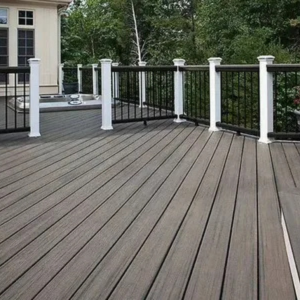Replacing a deck can enhance the beauty of your outdoor space and improve your home’s value. However, it’s a significant project that requires careful planning and execution. Here are some essential tips to ensure a smooth and successful deck replacement project.
1. Assess the Current Deck
Before starting the replacement process, evaluate your existing deck. Check for any signs of structural damage, rot, or instability. Understanding the condition of your current deck will help you decide if a complete replacement is necessary or if repairs can be made instead. Take note of the deck’s size, layout, and any features that you want to replicate or change in the new design.
2. Set a Budget
Establishing a realistic budget is crucial. Consider all costs involved in the project, including materials, labor, permits, and any additional features you might want, such as lighting or railings. Here’s a quick breakdown of potential costs:
- Materials: Different types of decking materials (wood, composite, PVC) vary in price. Research your options and choose materials that fit your budget while meeting your aesthetic and durability needs.
- Labor: If you’re hiring professionals, obtain quotes from multiple contractors to get a sense of labor costs. If you plan to do it yourself, account for any tools or equipment you may need to rent or purchase.
- Permits and Fees: Check with local regulations to determine if permits are required for your deck replacement. Factor in any associated fees in your budget.
3. Choose the Right Materials
Selecting the appropriate materials is vital for the longevity and appearance of your new deck. Consider factors such as:
- Durability: Look for materials that can withstand the weather conditions in your area. Composite and PVC decking are generally more resistant to moisture and pests compared to traditional wood.
- Maintenance: Consider how much maintenance you’re willing to do. While natural wood requires regular sealing and staining, composite materials typically need less upkeep.
- Aesthetic Appeal: Choose materials that match your home’s exterior and your personal style. Many composite and PVC options now mimic the look of wood, providing a modern touch.
4. Design Your Deck Wisely
Take the time to plan your deck’s layout and design. Think about how you’ll use the space. Do you want to incorporate built-in seating, planters, or a fire pit? Consider traffic flow and ensure there’s enough space for movement. It’s also a good idea to consult with a designer or contractor to optimize your design for functionality and aesthetics.
5. Hire a Qualified Contractor
If you’re not experienced in deck construction, hiring a qualified contractor can save you time and ensure the job is done correctly. Look for licensed and insured professionals with experience in deck building. Ask for references, review their portfolio, and obtain multiple quotes before making a decision.
6. Obtain Necessary Permits
Check with your local building department to find out what permits are required for your deck replacement. Obtaining the correct permits is essential for compliance with local codes and regulations. Failure to do so can result in fines or complications during the project.
7. Prepare the Site
Before construction begins, prepare the site by clearing any furniture, plants, or obstacles from the deck area. If necessary, remove the old decking and any structural components that will not be used in the new deck. Ensure that the area is level and accessible for construction.
8. Follow Proper Installation Techniques
Whether you’re doing it yourself or working with a contractor, ensure that proper installation techniques are followed. This includes:
- Correct Joist Spacing: Proper spacing of joists is crucial for structural integrity. Follow manufacturer guidelines for the chosen decking material.
- Using Quality Fasteners: Choose corrosion-resistant screws or fasteners to enhance the longevity of your deck.
- Allowing for Expansion and Contraction: If using composite materials, ensure that there’s enough space for expansion and contraction due to temperature changes.
9. Plan for Finishing Touches
Once the main structure is complete, consider additional features that will enhance your deck's functionality and aesthetics. This could include:
- Railings: Adding railings not only improves safety but also adds a decorative element to your deck. Choose materials that match your deck and meet local building codes.
- Lighting: Incorporate deck lighting for ambiance and safety during evening use. Options include recessed lights, post lights, or string lights.
- Staining or Sealing: If using wood, apply a protective sealant or stain to enhance its appearance and protect it from the elements.
10. Enjoy Your New Deck
Once the deck is complete, take the time to enjoy your new outdoor space! Arrange furniture, add plants, and create an inviting atmosphere. Regular maintenance, such as cleaning and inspections, will help ensure your deck remains in great condition for years to come.
Conclusion
Replacing a deck can be a rewarding project that enhances your home’s outdoor living space. By following these tips and carefully planning each step, you can ensure a smooth and successful deck replacement. Whether you choose to take on the project yourself or hire a professional, the right preparation and materials will lead to a beautiful and functional deck you can enjoy for years to come.





Comments